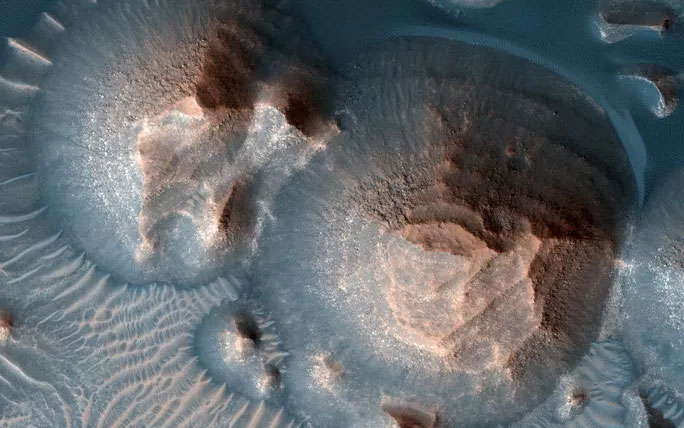High-resolution images from NASA’s Mars Reconnaissance Orbiter have provided surprising evidence of ancient geological activity on our neighboring red planet.

Mars’ Arabia Terra covered by ancient volcanic ash deposits – (Photo: NASA)
Clear evidence of geological activity in the Solar System has only been discovered on two celestial bodies: Earth and Jupiter’s moon Io. This factor, whether on a large scale like tectonic shifts or smaller events like volcanic eruptions or earthquakes, is believed to be one of the elements that contribute to a planet’s habitability, helping to stabilize and balance its climate, stimulate reactions that lead to life, and encourage the evolution of organisms.
NASA’s new findings indicate that across a northern region of the planet, known as Arabia Terra, there are sediment layers that are 4 billion years old, composed of minerals consistent with… volcanic ash. This suggests that ancient Mars once experienced volcanic activity similar to that of Earth.
According to Sci-News, NASA estimates that there were as many as 1,000 to 2,000 individual eruptions within a span of 500 million years in ancient Mars’ history.
Dr. Patrick Whelley from NASA’s Goddard Space Flight Center and his colleagues stated: “Some of the large, deep craters in western Arabia Terra are believed to be explosive volcanoes, a type of volcano that can produce supereruptions.”
The natural conditions in the region also help to preserve the layers of volcanic ash, preventing them from being disturbed by wind and water, which allows them to remain neatly stacked as if they had just erupted yesterday.
To create a supereruption, a planet needs a sufficiently large internal energy source to melt deep rock. This indicates that Mars may not be as “dead” as we once thought or, at the very least, was a more dynamic planet than it is today.
The research was recently published in the scientific journal Geophysical Research Letters.

















































